LightCraft Workshop Fader ND - Variable ND Filter...
I recently ordered the LightCraft Workshop Fader ND Mark II from their Australian eBay shop for AUD$129 delivered.
This is one of the class of variable Neutral Density filters and is adjustable between 2 to 8 stops of added density. Density changes when filter is rotated (similar mechanism to a CPL filter). I'd been considering a neutral density filter (something like an ND8 - 3 stops) to use during those times I wanted a longer shutter speed during brighter conditions (to smooth out flowing water for instance).
As I was out in the Blue Mountains yesterday taking photos of waterfalls it was an ideal time to try the filter out - although as it happens the very dull overcast conditions (perfect) we had meant that using the filter wasn't actually necessary to get a slow enough shutter speed to smooth the waterfalls so I didn't end up using this filter for most of my shots.
I did however take a sequence of test shots to show how it works.
First the baseline shot with no filters at all:
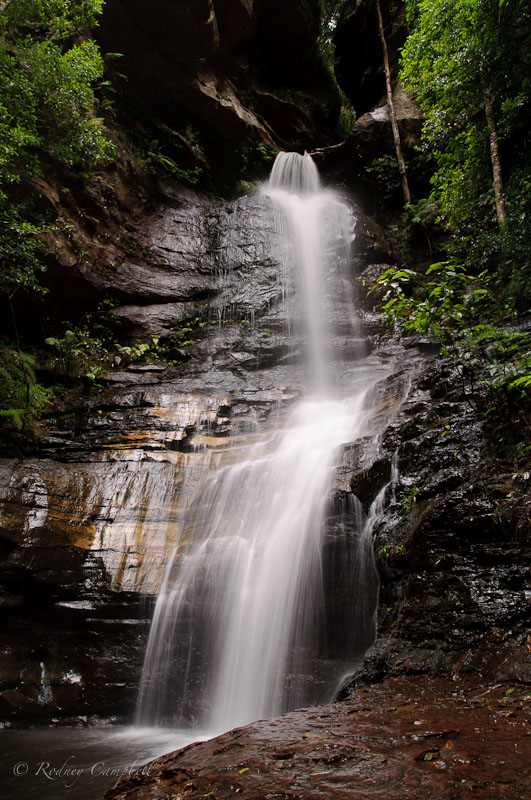
NIKON D90 + 17.0-50.0 mm f/2.8 @ 17 mm, 1/3 sec at f / 16, ISO 200
At the minimum setting - supposed to be around two stops but it looks to be more in the one and a half to two stops range:
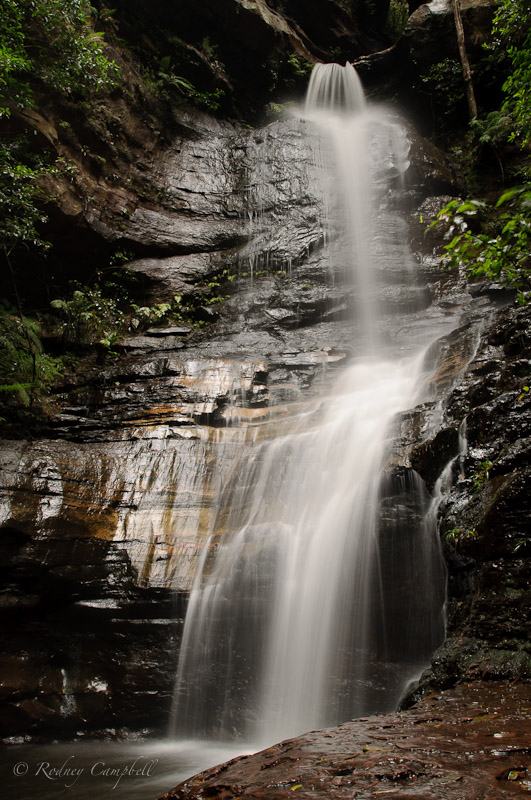
NIKON D90 + 17.0-50.0 mm f/2.8 @ 20 mm, 1 sec at f / 16, ISO 200, Fader ND
Approx 3 stops:
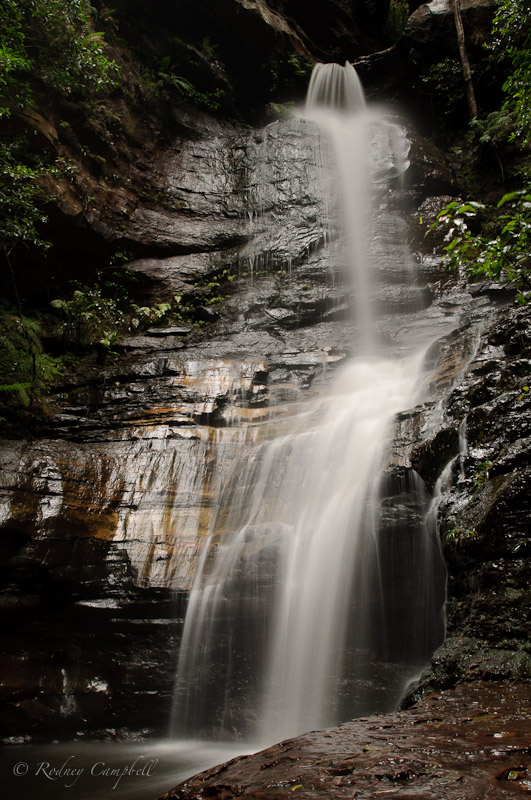
NIKON D90 + 17.0-50.0 mm f/2.8 @ 20 mm, 2 sec at f / 16, ISO 200, Fader ND
Approx 4 stops:
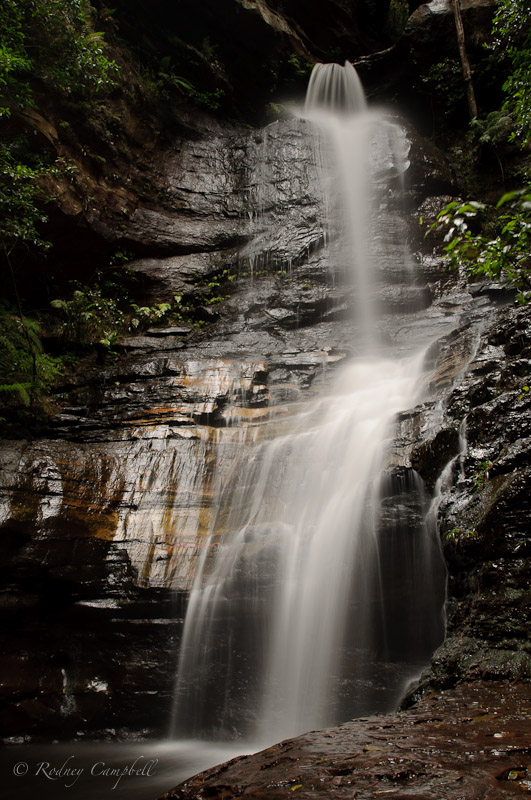
NIKON D90 + 17.0-50.0 mm f/2.8 @ 20 mm, 4 sec at f / 16, ISO 200, Fader ND
Approx 5 stops:
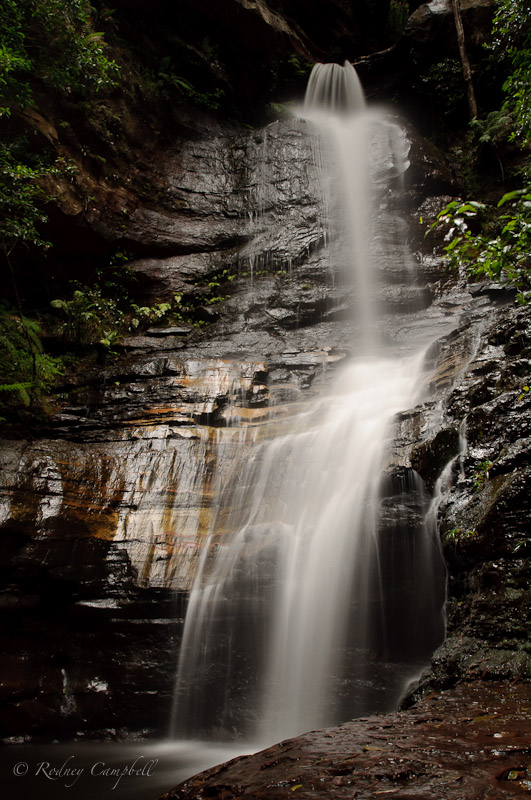
NIKON D90 + 17.0-50.0 mm f/2.8 @ 20 mm, 8 sec at f / 16, ISO 200, Fader ND
Approx 6 stops:
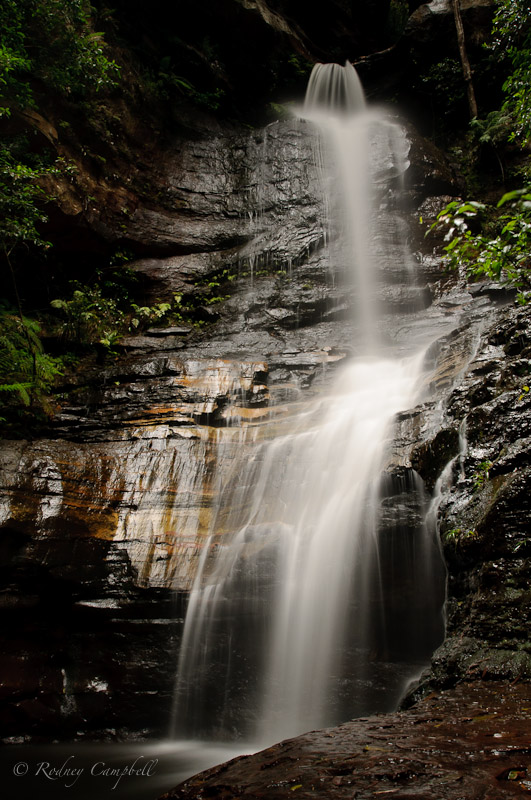
NIKON D90 + 17.0-50.0 mm f/2.8 @ 20 mm, 15 sec at f / 16, ISO 200, Fader ND
There was more turn in the ring to go before reaching the maximum setting however there is a known weird cross polarisation effect which occurs at very high density settings and the wider the lens the more pronounced/noticable this becomes. This appears as a dark cross which starts to form over the image.
Below is a test shot showing this in effect at 17mm - I took this the day before down on the harbour in VERY bright conditions - the ambient scene had a shutter speed of 1/60th even at f/22 and the last shot below was taken at the maximum setting (actually a little beyond the max marking which accentuates the effect) with around 8 stops of light reduction (3 sec shutter) where the dark cross over the middle is evident.
Approx 8 stops:
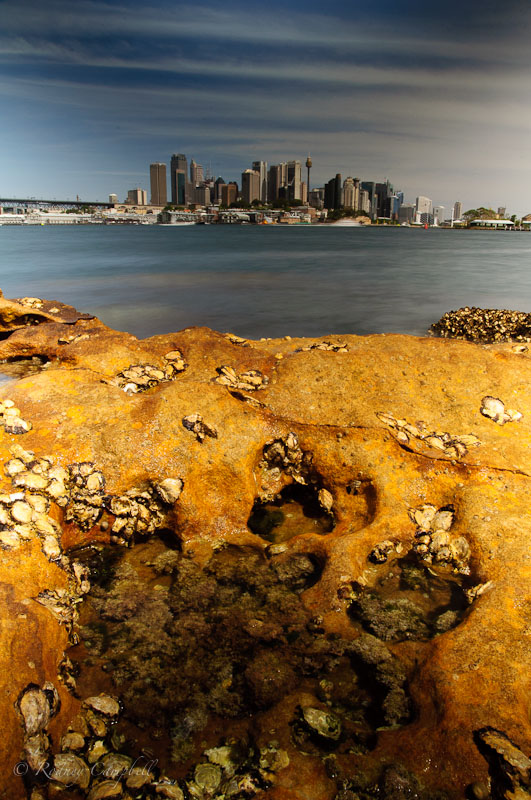
NIKON D90 + 17.0-50.0 mm f/2.8 @ 17 mm, 3 sec at f / 22, ISO 200, Fader ND
So the pro's:
- given that it is a fixed filter it makes composing and focusing shots much easier without having to remove the filter - just dial the effect down to min to compose and focus (incl auto focus) and then dial it up
- basically appears to work fine between 2 and 6 stops for my reasonably wide 17mm lens
- mine has a 77mm rear thread for attaching and an 82mm front thread (to assist with not vignetting) - it also comes with an 82mm lens cap
The con's:
- if you use wide angle you can't really use it all the way to max (8 stops) otherwise you get weird effects on your image
- it appears to affect both the auto white balance and auto metering the stronger the settings - with my camera I found it tends to AutoWB to cooler and also starts to underexpose the higher you go - this may be normal with strong ND filters (I've never used any before) - this probably wouldn't be an issue for real world use where you aren't trying to take test shots at specific exposure combinations - you just set the WB (on camera or in post) and set the filter for the actual desired result for the scene you're shooting
This is one of the class of variable Neutral Density filters and is adjustable between 2 to 8 stops of added density. Density changes when filter is rotated (similar mechanism to a CPL filter). I'd been considering a neutral density filter (something like an ND8 - 3 stops) to use during those times I wanted a longer shutter speed during brighter conditions (to smooth out flowing water for instance).
As I was out in the Blue Mountains yesterday taking photos of waterfalls it was an ideal time to try the filter out - although as it happens the very dull overcast conditions (perfect) we had meant that using the filter wasn't actually necessary to get a slow enough shutter speed to smooth the waterfalls so I didn't end up using this filter for most of my shots.
I did however take a sequence of test shots to show how it works.
First the baseline shot with no filters at all:

NIKON D90 + 17.0-50.0 mm f/2.8 @ 17 mm, 1/3 sec at f / 16, ISO 200
At the minimum setting - supposed to be around two stops but it looks to be more in the one and a half to two stops range:

NIKON D90 + 17.0-50.0 mm f/2.8 @ 20 mm, 1 sec at f / 16, ISO 200, Fader ND
Approx 3 stops:

NIKON D90 + 17.0-50.0 mm f/2.8 @ 20 mm, 2 sec at f / 16, ISO 200, Fader ND
Approx 4 stops:

NIKON D90 + 17.0-50.0 mm f/2.8 @ 20 mm, 4 sec at f / 16, ISO 200, Fader ND
Approx 5 stops:

NIKON D90 + 17.0-50.0 mm f/2.8 @ 20 mm, 8 sec at f / 16, ISO 200, Fader ND
Approx 6 stops:

NIKON D90 + 17.0-50.0 mm f/2.8 @ 20 mm, 15 sec at f / 16, ISO 200, Fader ND
There was more turn in the ring to go before reaching the maximum setting however there is a known weird cross polarisation effect which occurs at very high density settings and the wider the lens the more pronounced/noticable this becomes. This appears as a dark cross which starts to form over the image.
Below is a test shot showing this in effect at 17mm - I took this the day before down on the harbour in VERY bright conditions - the ambient scene had a shutter speed of 1/60th even at f/22 and the last shot below was taken at the maximum setting (actually a little beyond the max marking which accentuates the effect) with around 8 stops of light reduction (3 sec shutter) where the dark cross over the middle is evident.
Approx 8 stops:

NIKON D90 + 17.0-50.0 mm f/2.8 @ 17 mm, 3 sec at f / 22, ISO 200, Fader ND
So the pro's:
- given that it is a fixed filter it makes composing and focusing shots much easier without having to remove the filter - just dial the effect down to min to compose and focus (incl auto focus) and then dial it up
- basically appears to work fine between 2 and 6 stops for my reasonably wide 17mm lens
- mine has a 77mm rear thread for attaching and an 82mm front thread (to assist with not vignetting) - it also comes with an 82mm lens cap
The con's:
- if you use wide angle you can't really use it all the way to max (8 stops) otherwise you get weird effects on your image
- it appears to affect both the auto white balance and auto metering the stronger the settings - with my camera I found it tends to AutoWB to cooler and also starts to underexpose the higher you go - this may be normal with strong ND filters (I've never used any before) - this probably wouldn't be an issue for real world use where you aren't trying to take test shots at specific exposure combinations - you just set the WB (on camera or in post) and set the filter for the actual desired result for the scene you're shooting
